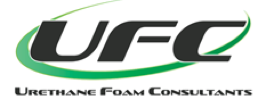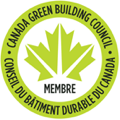As an air and vapour barrier, polyurethane provides high performance thermal insulation.
Our services
Polyurethane
On application, polyurethane adheres securely to all substrate surfaces to create a uniform, monolithic barrier conforming to irregular shapes and sealing the spaces and junctions where air can infiltrate. This product will give you a top quality energy efficient home with a durable insulation system that prevents dust, allergens and moisture.
Suppliers




Tests and certifications





Polyurethane applications
- Exterior walls
- Cantilever floors and rim joists
Polyurethane allows you to seal your cantilevered floors against the elements, eliminating the risk of cold floors during the winter months.
- Foundations
Sprayed polyurethane not only allows you to thermally insulate your foundations, but it also acts as a vapour and air barrier.
- Interior walls
The physical properties of polyurethane make it possible to compensate for irregularities in your interior walls by acting as an air and vapour barrier, while providing high performance insulation.
- Below slab
When sprayed under the slab, this product is the most effective in protecting your home against infiltration of radon, a colourless and odourless radioactive gas which is the second most common cause of lung cancer after smoking according to Health Canada.
- Loft or attic
When you insulate your attic using spray polyurethane you’ll save energy, which translates into money savings.
- Crawl spaces
The sealing properties of urethane make it well adapted to irregular surfaces such as stone walls found in crawl spaces.
Cellulose
Cellulose is made from 85% recycled newsprint. It appears as small grey fibres, smooth to the touch, is odourless and has a low VOC content. Acting as a shield that reduces the transmission of heat and sound, cellulose is efficient and environmentally friendly. It also reduces energy consumption and improves your indoor comfort depending on the season.
Suppliers

Tests and certifications




Cellulose insulation uses
- Blown cellulose (attic)
An excellent type of insulation for attics in new construction which can be used in addition to other existing insulation. Cellulose is installed using specialized pneumatic blowing equipment at a minimum density of 24 kg / m³ (1.5 lb / ft³) and can also be placed manually in confined spaces.
- Injected cellulose (wall and floor)
With this method a retaining membrane is attached to the studs with staples or rigid bands. Openings are then made to inject the dry cellulose with a nozzle (for compacted wall systems).
Wool
Loose fibreglass has exceptional thermal resistance to maximize energy savings. Homeowners prefer fibreglass insulation because it retains its insulating power over time. Since fibreglass does not absorb moisture, the insulation doesn’t retain water, preventing permanent loss of R value.
Suppliers

Tests and certifications




Wool insulation use
- Blown wool (attic)
An excellent type of insulation for attics in new construction which can also be used in addition to other existing insulation. Fibreglass insulation is installed using specialized pneumatic blowing equipment.
- Injected wool (wall and floor)
With this method a retaining membrane is attached to the studs with staples or rigid bands. Openings are then made to inject dry fibreglass insulation with a nozzle (for compacted wall systems)
Consult with one of our experts
Our opening hours are Monday to Friday from 8 a.m. to 5 p.m.


